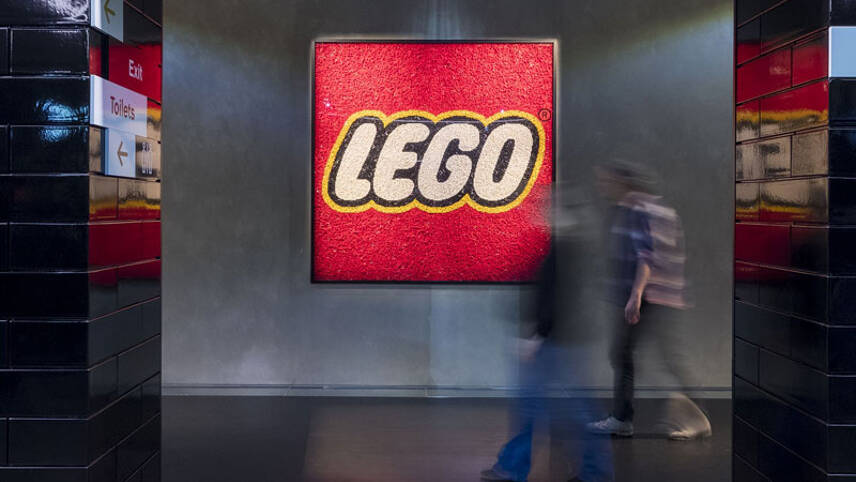Register for free and continue reading
Join our growing army of changemakers and get unlimited access to our premium content

Pictured: The LEGO House, Denmark
The new agreement between LEGO Group and Climeworks accounts for the permanent removal of hard-to-abate emissions from the air with Climeworks’ direct air capture and storage (DAC+S) solutions.
The $2.4m agreement is also supported by the investment firm of the LEGO brand, KIRKBI, which signed a $405,000 agreement for similar services.
LEGO Group’s chief sustainability officer Annette Stube said: “We want children to inherit a healthy planet – and we’re determined to play our part in making that happen. To succeed we must take action to drive systemic change.
“We were the first large toy company to announce a science-based emissions reduction target in 2020 and we want to continue to lead the way in finding innovative solutions for the challenges we face. This is why we are working with innovators like Climeworks – their technology, as part of a varied programme of initiatives, can help us and society as a whole realise the net-zero future that is needed to protect our planet for generations to come”.
Last year, LEGO Group committed to achieving net-zero greenhouse gas emissions (GHG) by 2050, while revealing its plans to increase investment in environmental sustainability by $1.4bn over a three-year period.
The LEGO Group aims to triple its investment in environmental sustainability within the next three years, with a focus on curbing GHG emissions. The investment plan will involve creating carbon-neutral buildings and sites, including two factories designed for carbon-neutral operation, and seeking Gold LEED certification as a standard for new structures.
Additionally, renewable energy production will be expanded across sites to decrease absolute emissions in manufacturing, stores and offices, involving both increased energy output from factories and procuring renewable energy.
The company has since announced that it increased its solar capacity by 16% in 2023.
Climeworks
The nine-year partnership means that DAC+S will be one of a suite of technologies utilised by the LEGO Group.
The process involves the air being drawn into large collector containers where the CO2 is captured through a filter. The collected CO2 is then stored deep underground by Climeworks’ storage partner Carbfix
edie Visited the Iceland site to learn more about how the technology works. Click here to find out more.
Climeworks opened its first direct air capture and storage plant (DAC) in 2021, the first step on a broader ambition to scale-up and deliver multi-megaton capacity for carbon capture in the 2030s, rising to more than a gigaton capacity by 2050.
Microsoft first announced an intention to source carbon removal solutions from Climeworks in January 2021, a year after pledging to achieve carbon-negative operations and supply chains by 2030. To achieve this 2030 goal, Microsoft – which is already carbon-neutral in operations – intends to halve emissions this decade and invest to offset and remove more carbon than it emits annually.
Climeworks has since entered into a ten-year purchase agreement with Microsoft, claiming at the time that it was “one of the largest” in the DAC space and will support the removal of “tens of thousands of tonnes of carbon dioxide from the atmosphere”. In total, Climeworks provides solutions for more than 160 companies.
Some climate scientists have concluded that large-scale carbon capture – whether man-made or nature-based – is needed at scale to avert the worst physical impacts of climate change due to historic and continuing emissions.
The Intergovernmental Panel on Climate Change (IPCC) itself has stated that, by 2050, the world’s air-based carbon removal capacity should be 3-12 billion tonnes in a net-zero world. This would see carbon dioxide removal (CDR) solutions account for any unavailable emissions following a 90% reduction globally by 2050.


Matt,
You will be aware that Microsoft was removed from SBTi on 31.01.2024, due to an expired commitment. Microsoft do not appear to be fulfilling their pledges that your report alludes to.
I’m wondering why is LEGO investing in DAC+S and not in NBS like Biochar, do they think that leaving a better world for children can be served better with CCS strategies that tackle one problem only with no room for a net positive cascading effect like DAC-S, instead of more holistic more scalable and distributive strategies like regenerating soil or using non fossil C as a matter for materials in a circular industrial economy. Microsoft is doing both, migh be LEGO will wake up too.